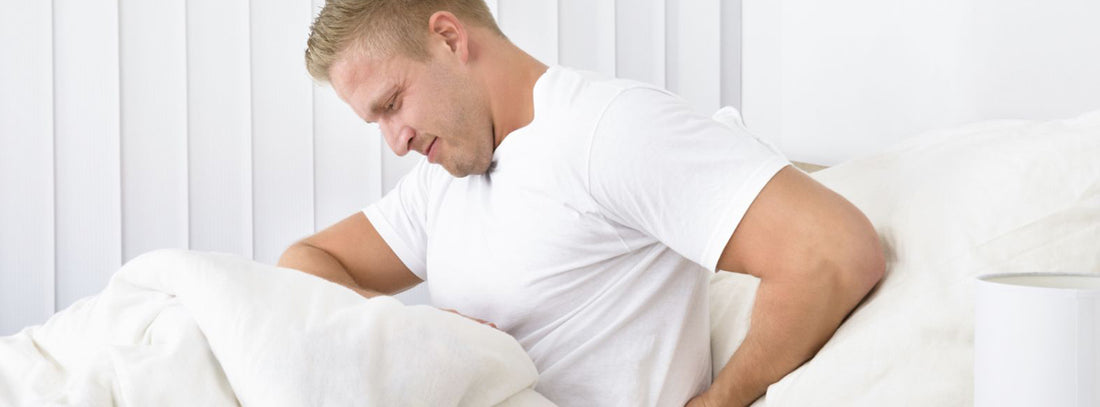Millions of people are suffering from sleep disorders and struggle sleeping at night. The area of sleep medicine and treatments is constantly progressing as research and studies are conducted to understand better. And help those millions of people lead a normal life. As a result of the research and studies conducted for years, the number of sleep disorders rose and are still rising. In this article, we discuss the types of sleep disorders in general. According to ICSD (International Classification of Sleep Disorders), sleep disorders are categorized into 6 major categories. They are,
- Insomnia
- Central disorders of hypersomnolence
- Circadian rhythm sleep-wake disorders
- Parasomnias
- Sleep related breathing disorders and
- Sleep related movement disorders.
1. Insomnia
Insomnia is known as the most common sleep disorder. The latest publication (3rd edition) of ICSD defines insomnia as an individual’s inability to trigger sleep and stay asleep. Also, frequently wake up in the middle of the night or waking up too early in the morning. Insomnia makes you wake up all tired/ weary and leaves you sleepy all day. This can be categorized into two; acute insomnia or chronic insomnia. Acute insomnia is short term and is affecting 25% of adults. Chronic insomnia is long term and affects about 10% of adults.
The category, acute insomnia can be the result of a stressful incident, side effects from medication, poor sleep conditions or other medical conditions. On the other hand, chronic insomnia occurs when an individual is sleep deprived for three days of the week for three months constantly. Apart from these, other types of insomnia also exist. Fatal familial insomnia which is a rare type of insomnia that runs in families is one example. It makes an individual unable to sleep for a long period of time which may finally lead to death.
2. Central Disorders of Hypersomnolence
The main characteristic of Central Disorders of Hypersomnolence is an individual’s severe and excessive daytime sleepiness. It reclassifies into narcolepsy type I, narcolepsy type II, idiopathic hypersomnia, Kleine-Levin syndrome, hypersomnia due to a medical disorder, hypersomnia due to a medication or substance, hypersomnia associated with a psychiatric disorder and insufficient sleep syndrome. Narcolepsy is a neurological disorder. Its main characteristic is the inability of the brain to control sleep/ wake cycles.
Idiopathic hypersomnia is where none of the causes of excessive daytime sleepiness are present but an individual feels rarely rested. Hypersomnia is a long term sleep disorder which is rare. The main characteristic of individuals suffering from narcolepsy is daytime sleepiness despite the quality of nighttime sleep. It’s an irresistible desire to sleep which is known as a ‘sleep attack’. Kleine-Levin syndrome is when an individual sleeps nearly an entire day (about 23 hours). This syndrome is also known as ‘sleeping beauty syndrome’ given how it characterizes.
3. Circadian Rhythm Sleep-Wake Disorders
The main characteristic of Circadian rhythm sleep-wake disorder is disruption to the usual circadian rhythm. And causes an individual to experience insomnia, excessive daytime sleepiness or both. This reclassifies into delayed sleep-wake phase disorder, advanced sleep-wake phase disorder, irregular sleep-wake rhythm, non-24-hour sleep-wake rhythm disorder, shift work disorder, jet lag disorder and circadian rhythm sleep-wake disorder not otherwise specified (NOS).
4. Parasomnias
Parasomnias are unwanted actions, movements during sleep and abnormal sleep behaviours. It classifies into NREM-related parasomnias, REM-related parasomnias, isolated symptoms and normal variants and other parasomnias. Sleep terrors, sleepwalking, sleep eating, sleep sex, etc. are forms of parasomnia. Treatments for parasomnia may include safety precautions and medications.
5. Sleep Related Breathing Disorders
Sleep related breathing disorders are, just as the name suggests, sleep disorders which cause as a result of breathing problems. There are two main categories. Central origin and obstructive. The main characteristic of central sleep apnea syndrome is the lack of breathing effort. Sleep issues caused by obstruction of the airways are also characteristics od obstructive sleep apnea disorders. Apart from these two main categories, few others can also be seen. Such as sleep-related hypoventilation disorders, sleep-related hypoxemia disorder and isolated symptoms and normal variants.
6. Sleep Related Movement Disorders
The main characteristics of these disorders are simple and often repetitive movements of an individual during sleep. And these movements tend to wake up the individual or the bed partner causing an obstruction to their sleep. Sleep related movement disorders further classifies into restless leg syndrome, periodic limb movement disorder, sleep related leg cramps, sleep-related bruxism, sleep-related rhythmic movement disorder, benign sleep myoclonus of infancy, propriospinal myoclonus at sleep onset, sleep-related movement disorder due to medical disorder, sleep-related movement disorder due to medication or substance and sleep-related movement disorder, unspecified.
I hope you have a better understanding of types of sleep disorders now. But simply understanding them is not enough. If you feel like either you or someone you know is going through a tough time and struggle with sleeping, it’s the wisest to meet a consultant because sleep disorders, in their early stages are easier to treat than in their middle or final stages.
Reference
https://www.accqsleeplabs.com/sleepdisorders/common-types-of-sleep-disorders
https://www.verywellhealth.com/overview-of-common-sleep-disorders-3014775
https://www.webmd.com/sleep-disorders/guide/sleep-disorders-symptoms-types

